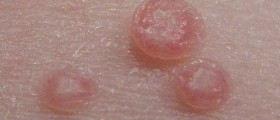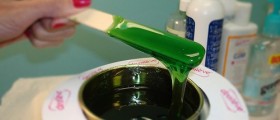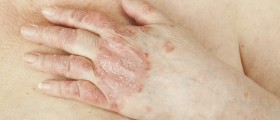There are many different types of benign penile lesions. Not every lesion on the skin, anywhere on the body, including the penis, indicates a malignancy. Benign penile lesions can be related to skin disorders or to sexually transmitted diseases. One of the most benign and most harmless types of penile lesions are pearly penile papules.

Pearly penile papules
Pearly penile papules are small lesions that can be filliform or dome-shaped and they usually appear on the tip of the penis. They can be arranged in one or more circles around the glans penis, the part of the penis commonly referred to as the head of the penis. Because of the way they are arranged, most patients mistake them for a symptom of a sexually transmitted disease, which they are not. Men who notice pearly papules on their penis often seek medical help quite soon, usually from a dermatologist, because they fear the papules might be malignant or resulting from sexual activity. These lesions are usually confused with genital warts and molluscum contagiosum.
These benign penile lesions are not infectious and they do not have a potential for malignant development. They are more common in uncircumcised men. In fact, pearly papules in men who undergo circumcision later in life in most of the cases seem to regress without any other form of treatment.
As for the causes of pearly penile papules, since they are more prevalent in uncircumcised men, it was in past suspected that their development has something to do with the collection of smegma underneath the foreskin, however this was proven to be untrue.
Pearly penile papules are asymptomatic and require no treatment at all.
Other types of benign penile lesions
Some of the penile lesions, even though they are benign, are infectious and require specific treatment. They can come in form of ulcers, plaques or papules.
Ulcers on the penis may indicate syphilis or other sexually transmitted diseases. Herpes simplex is one of the most common causes of ulcerous lesions of the penis. Apthous ulcers are another potential form of benign penile lesions.
As for the papules, pearly penile papules are very common and they are not at all dangerous. Other kinds of papules that can be seen on the penis may include molluscum contagiosum, folliculitis, psoriasis and genital warts.
Plaques may indicate lichen sclerosis, balanitis, psoriasis and eczema.
Some of these conditions are viral and infectious and can be transmitted through sexual intercourse. Others are considered to be skin diseases or disorders. However, all of them are benign, meaning they are not cancerous.
- www.nhs.uk/conditions/penile-cancer/
- Photo courtesy of Elvert Barnes by Flickr: www.flickr.com/photos/perspective/15453197/

















Your thoughts on this
Loading...